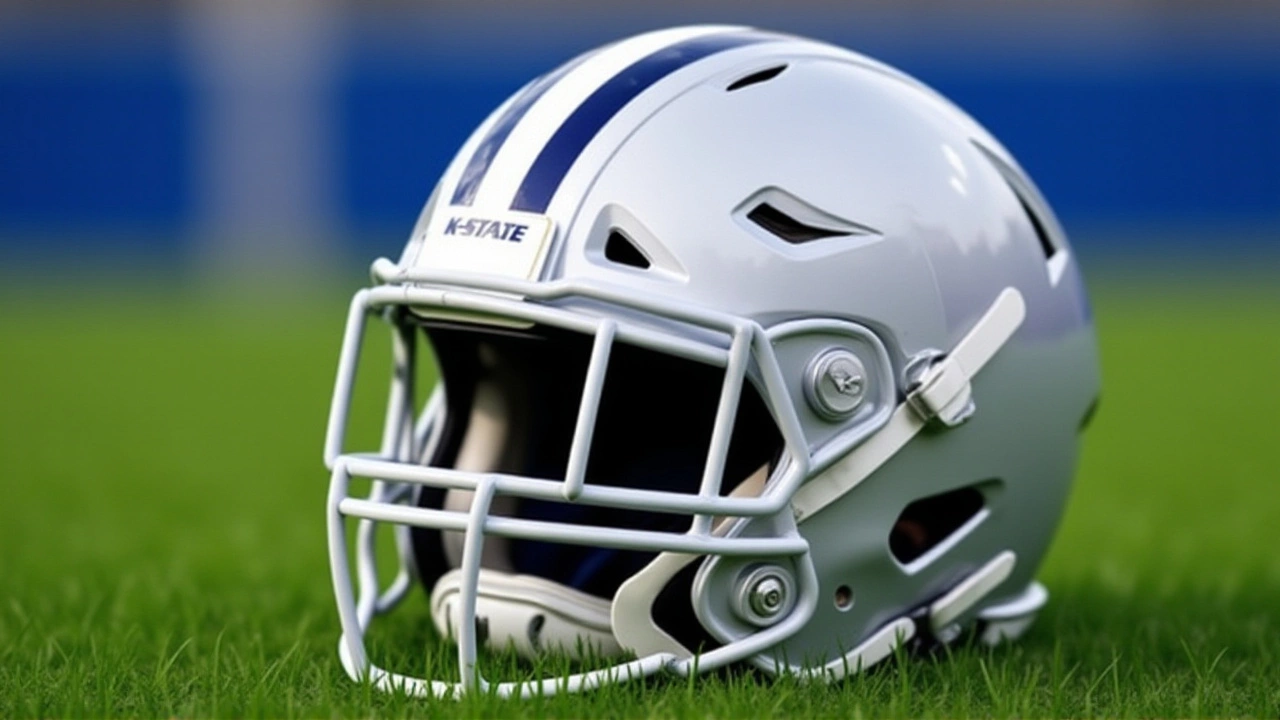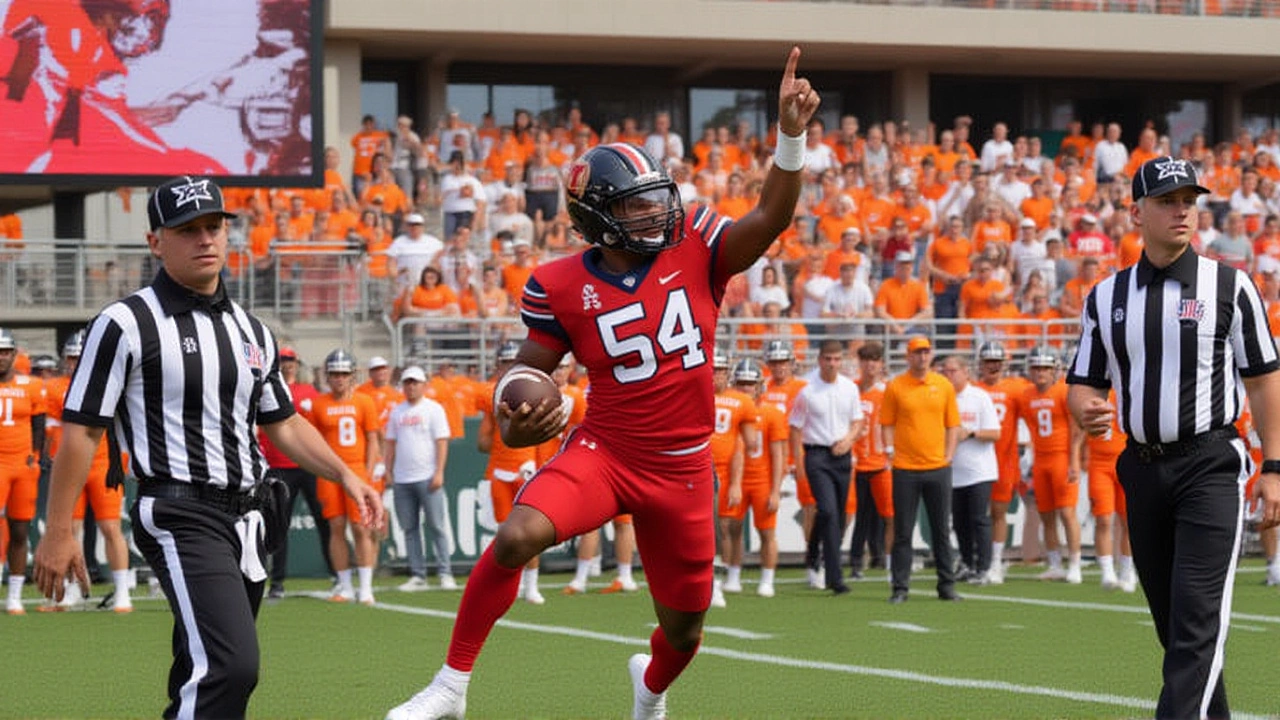The Utah Utes aren’t just playing for a win—they’re playing for their College Football Playoff lives. On Saturday, November 22, 2025, at 6:27 PM UTC, they’ll welcome the Kansas State Wildcats to Rice-Eccles Stadium in Salt Lake City, where a dominant performance isn’t just preferred—it’s mandatory. With a 17.5-point spread in Utah’s favor and an 89.8% implied win probability, the math says this should be a rout. But in college football, the numbers don’t always tell the whole story. And this game? It’s about legacy.
Why This Game Matters More Than the Record Suggests
Utah enters at 8-2, ranked No. 13, and still clinging to a sliver of CFP hope. Their resume? Strong wins over ranked opponents, a top-10 defense, and the nation’s second-best rushing attack. But they’ve also lost to Baylor and Arizona State by a combined 10 points. That’s the problem. The playoff committee doesn’t reward close wins. It rewards dominance. As Pete Mundo, commentator for Heartland College Sports, put it in his November 20 analysis: "Utah knows it’s got to win. They’ve got to win big as well. They can’t just go into these games and, you know, win by a field goal or a touchdown." Meanwhile, Kansas State sits at 5-5—barely above .500—and has been anything but impressive. Their 14-6 win over Oklahoma State last week wasn’t a statement. It was a survival. They didn’t score a touchdown in the second half. Their offense looked sluggish. Their defense, which forces turnovers at a top-4 rate nationally, is the only reason they’re still relevant.The Matchup That Could Break the Wildcats
Utah’s offense runs on power. Led by running back Wayshawn Parker (7.2 yards per carry) and dual-threat quarterbacks Devon Dampier and Byrd Ficklin, the Utes average 280 rushing yards per game—the best in the country. Their offensive line? Graded among the top five nationally. They don’t just block—they crush. Kansas State’s defense? It’s been shredded on the ground. They’ve allowed 150+ rushing yards per game and 16 rushing touchdowns this season. That’s not a weakness. That’s a chasm. And Utah? They’re built to exploit it. The Utes don’t need to throw. They just need to hand the ball off, grind out drives, and control the clock. In November, under the lights in Salt Lake City, that’s a death sentence for a team that’s already running on fumes.The Turnover Wildcard
Kansas State’s only real weapon is forcing mistakes. They’ve created 24 turnovers this season—fourth-best in the nation. Utah, by contrast, has only coughed up 10. That’s a 2:1 ratio in Utah’s favor. But Mundo’s right: Utah’s been clean. Dampier hasn’t thrown an interception in his last four games. Parker hasn’t fumbled since September. The Wildcats will need a miracle—maybe a tipped pass, maybe a botched snap—to even get into this game. And here’s the twist: Kansas State’s offense is so inconsistent, they’ve gone over the total in five of their last six games. That’s not because they’re scoring—it’s because they’re playing from behind. Utah’s defense, ranked 10th nationally in points allowed (15.6 per game), won’t let them hang around. If the Wildcats fall behind early, their only hope is a turnover. And that’s a gamble that rarely pays off against a team this disciplined.Betting Trends and Analyst Takeaways
The numbers are screaming Utah. The Utes are 8-2-0 against the spread this season. They’re 9-3 ATS against sub-.500 Big 12 opponents. They’re 4-1 ATS as double-digit favorites. The over is 9-2 in their last 11 November games. Meanwhile, Kansas State is 3-8 ATS in their last 11 road games. The over is 16-3 in their last 19 as underdogs. That’s not a pattern. That’s a prophecy. Winners and Whiners nailed it: "Utah -17.5 looks like the right side given how their strengths align perfectly against Kansas State’s weaknesses." The Utes’ offensive line will control the trenches. Their running game will drain the clock. Their defense will force Kansas State into predictable, one-dimensional plays. And when the fourth quarter rolls around, the Wildcats won’t have the energy—or the plays—to mount a comeback.
What’s at Stake Beyond the Scoreboard
This isn’t just about a playoff berth. It’s about momentum. Utah’s program has been on the rise since joining the Big 12. A win here—especially by 20+ points—cements them as a legitimate contender. A loss? It doesn’t just end their playoff hopes. It raises questions about their ability to compete with elite teams when it matters most. For Kansas State? A win would be seismic. It would be the kind of upset that redefines a season. But they’ve lost four of their last five away games. They’ve been outscored by 38 points in those losses. And they’re playing a team that’s hungry, focused, and built for this exact moment.What’s Next?
If Utah wins by 20 or more, expect them to crack the top 10 in the next CFP rankings. They’ll likely face a tough road game at TCU next week, but they’ll still be alive. If they win by less than 10? The committee will see them as inconsistent. And they’ll be out. Kansas State’s season will likely end with a bowl game in December. But if they pull off the impossible, they’ll enter next year with national respect—and a blueprint for how to beat a powerhouse.Frequently Asked Questions
Why is Utah favored by 17.5 points when Kansas State has a strong turnover margin?
Despite Kansas State forcing 24 turnovers—fourth-best in the nation—Utah has only turned the ball over 10 times all season. The Utes’ offense is disciplined, and their quarterbacks have been mistake-free lately. Kansas State’s turnover success has come against weaker offenses. Utah’s offensive line and running game are too dominant to let the Wildcats create chaos. The spread reflects Utah’s ability to control tempo and limit opportunities for turnovers.
How does Utah’s rushing attack compare to Kansas State’s defense?
Utah averages 280 rushing yards per game, the No. 2 offense in the country, led by Wayshawn Parker’s 7.2 yards per carry. Kansas State’s defense has allowed 150+ rushing yards per game and 16 rushing touchdowns this season. That’s a 130-yard gap in production. Utah’s offensive line is top-5 nationally in run-blocking grades, while Kansas State’s front seven has struggled with gap discipline and tackling in space.
What does Pete Mundo mean when he says Utah must "win big"?
The College Football Playoff committee rewards dominance, not close wins. Utah’s losses to Baylor and Arizona State were narrow, and those hurt their resume. To stay in contention, they need a statement win—ideally by 20+ points—to prove they can beat a conference opponent decisively. A 28-21 win won’t cut it. A 38-14 blowout? That’s the kind of performance that moves the needle.
Is the over/under of 52.5 points a good bet?
The under is the smarter play. Utah’s defense allows just 15.6 points per game, and they control the clock with their rushing attack. Kansas State’s offense is inconsistent and struggles to sustain drives. Even though Kansas State has gone over in 16 of their last 19 games as underdogs, they’re often playing from behind. Against Utah’s disciplined defense, they’re unlikely to score more than 20. The implied score of 35-18 suggests a low-scoring, grind-it-out game.
Can Kansas State still make a bowl game if they lose?
Yes. Even with a 5-6 record after this game, Kansas State could still qualify for a bowl if they win their final game against West Virginia. They’re currently projected as a 6-win team, and the Big 12 has enough bowl tie-ins to accommodate them. But a loss here would make their postseason path far less glamorous—and likely mean a lower-tier bowl game in December.
What’s the historical context for Utah vs. Kansas State matchups?
Utah leads the all-time series 10-2, including a 41-14 win in Manhattan last season. The Wildcats haven’t beaten Utah since 2013, and they’ve lost by an average of 21.5 points in their last five meetings. This isn’t a rivalry built on parity—it’s a matchup where Utah has consistently dominated, especially at home. The Utes are 7-1 at Rice-Eccles Stadium against Kansas State since 2005.
